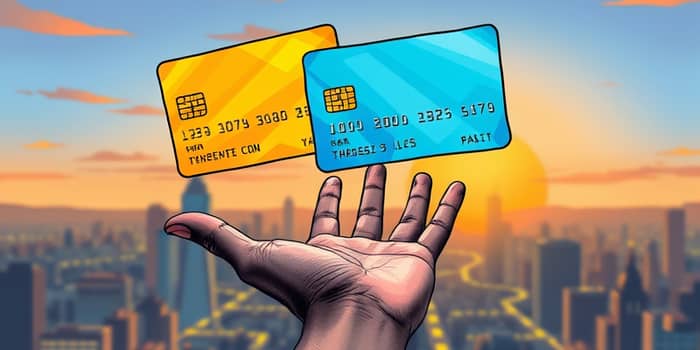
For many, the world of credit cards can feel like a maze of confusing terms, hidden fees, and endless fine print. Yet with the right guidance, you can transform credit cards from a source of anxiety into a powerful tool for financial growth. Whether you’re starting from scratch or seeking to maximize rewards, understanding how each card aligns with your goals is key.
In this article, we delve into the evolution, features, and practical tips for choosing between secured and unsecured cards. You’ll gain the knowledge needed to make informed choices and begin taking control of your financial future today.
Credit cards trace back to the 1950s with the launch of Diners Club, offering members the convenience of paying without cash. Since then, the industry has undergone tremendous changes—from magnetic stripes and EMV chips to contactless payments and mobile wallets.
Regulatory reforms, such as the CARD Act of 2009, ushered in stringent protections for consumers, capping fees and enhancing transparency. Meanwhile, fintech innovations continue to push boundaries, introducing virtual cards, AI-based fraud detection, and personalized reward programs.
Understanding this history highlights why secured cards emerged: to serve individuals with limited credit histories. Over time, these cards have evolved from simple deposit-based products to modern accounts offering rewards and path-to-unsecured-card upgrades.
At their core, secured and unsecured cards function similarly—but several features set them apart. Below is a comparison table illustrating these distinctions:
Secured credit cards require a refundable security deposit, which typically establishes your credit limit. For example, a $300 deposit often means a $300 limit. This collateral protects issuers and allows individuals with no or poor credit to qualify.
Key points about secured cards include:
Many secured cards feature automatic reviews for credit-limit increases or eligibility to upgrade to an unsecured product after consistent on-time payments. This pathway can be a turning point for those committed to improving credit scores.
Unsecured cards don’t require a deposit and are suited for individuals with established credit histories. Their limits and rates reflect the applicant’s credit score, income, and overall financial profile.
Typical benefits include:
However, approval standards are more stringent. Applicants often need scores above 650–700 and a history of responsible credit use. Missing payments or carrying high balances can lead to penalty rates and negative credit reporting.
Selecting between secured and unsecured cards depends on your current credit profile and future aspirations. Consider the following criteria when evaluating your options:
By aligning your choice with your financial habits and goals, you can make each purchase work toward strengthening your credit and maximizing benefits.
To illustrate these principles, here are a few popular card options:
The credit card industry is poised for transformation with emerging innovations. Keep an eye on:
These advancements will continue to make credit products more accessible, secure, and tailored to individual needs.
Choosing between secured and unsecured credit cards doesn’t have to be daunting. By understanding the core differences and aligning your selection with personal goals, you can build a strong credit foundation and unlock financial opportunities.
Remember, credit cards are tools—when used responsibly, they can help you make purchases, earn rewards, and demonstrate financial reliability to future lenders. With responsible credit management habits and informed decisions, you’re on the path to long-term financial success.
Whether you’re embarking on a credit-building journey or seeking to maximize rewards, the power to shape your credit destiny lies in your hands. Start today and watch your financial possibilities expand.
References













